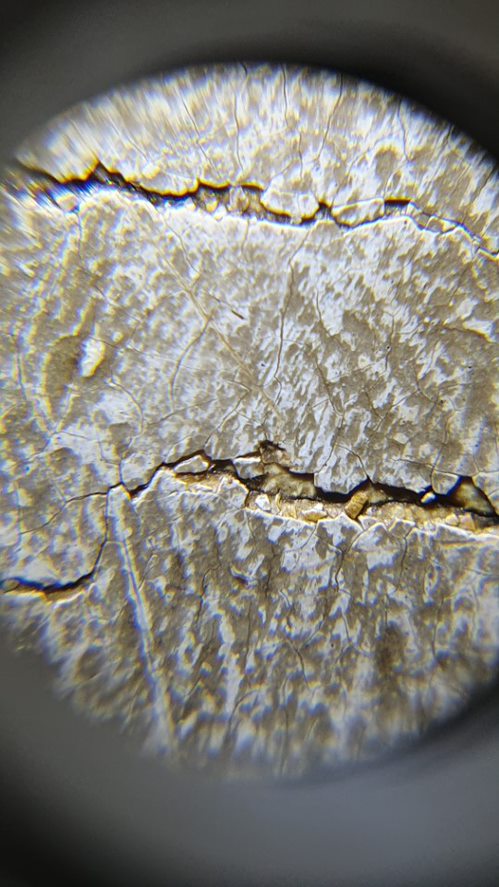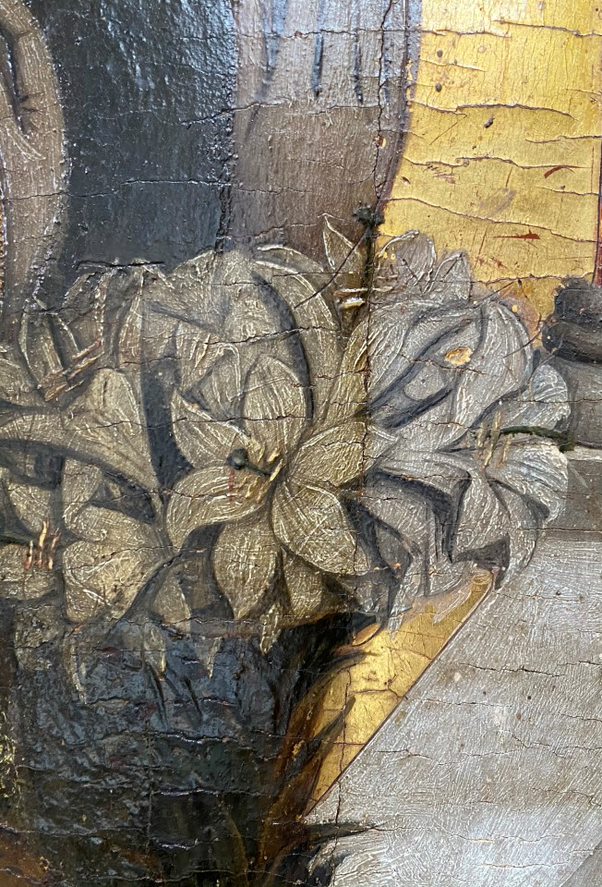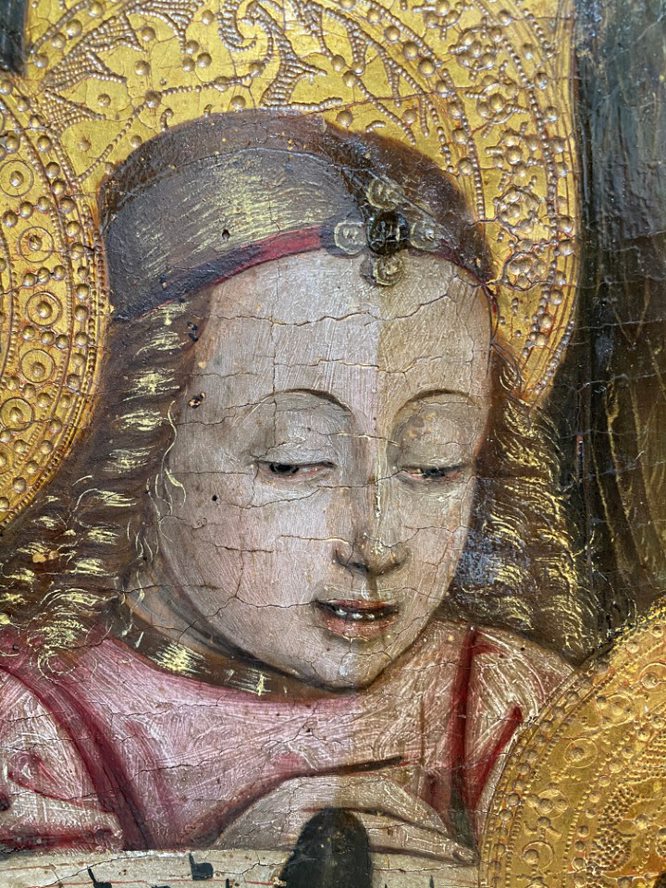Update 1 from the studio
Restoration of 'The Reixach'
The first step in the studio was the thorough documentation of the painting. Several photos were taken in high resolution in daylight, with UV and infrared. X-rays were also taken and infrared reflectography was performed.
The varnish removal tests
Varnish removal tests showed that the top layer of varnish and most of the overpaint were easily soluble. The varnish has historically been applied over the entire surface of the panel, including the gold. Removing the thick yellowed varnish makes a big difference. However, the surface under the varnish has a grayish and dull appearance. To better understand the varnish surface, it was first studied with a microscope.
Research with the microscope
Examination with the microscope revealed that it was a grayish layer sitting directly on top of the paint layer. Cross-sections show that it is probably not an old varnish or coating, but salts or surface dirt. This may have accumulated on the paint layer before the altarpiece was varnished. Not surprising considering the work is almost 600 years old!
For now, work continues on removing the varnish layer and investigating the gray layer. To this end, research is being conducted with the RCE on cross sections of the paint layers. In addition, the conservators are studying X-rays to gain more insight into the construction of the wooden panel, and are searching the archives for information about the painting's provenance.



Restorers:
Melissa Daugherty MA, PD Res
Marya Albrecht MA, PD Res
Gert van Gerven MA
